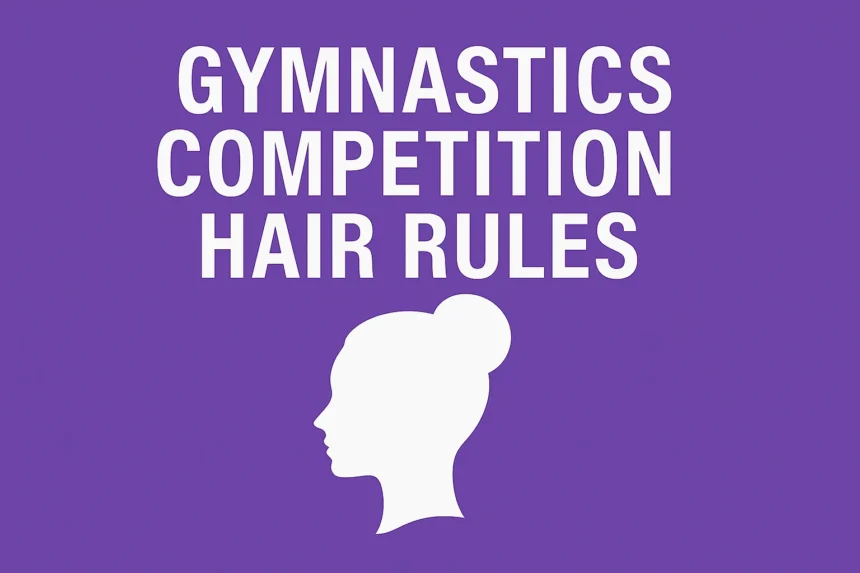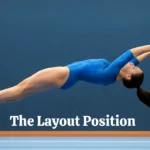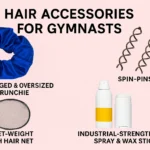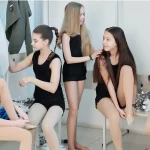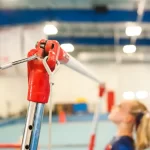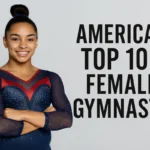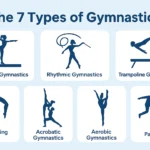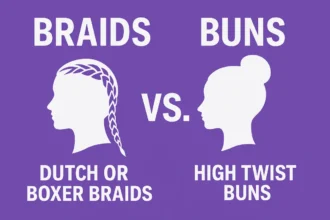When gymnasts step onto the competition floor, every detail counts. From their leotards to their presentation, judges expect athletes to look polished, professional, and compliant with uniform standards. Hair may seem like a small detail, but in gymnastics, it plays a big role in both safety and scoring.
- The FIG Baseline: Tidy, Secure, and Logo-Free
- USA Gymnastics: The Clearest Wording in the Sport
- TeamGym, Acro & Aerobic: Stricter “Close to the Head” Standards
- NCAA Collegiate Gymnastics: No Line Item, but Strict Team Rules
- Accessories, Color, and Glitter: What’s Allowed in 2025?
- Coach-Tested Tips to Avoid Deductions
Let’s breaks down what the rulebooks say, how judges enforce them, and how to avoid hair-related deductions at meets.
The FIG Baseline: Tidy, Secure, and Logo-Free
At the international level, hair regulations fall under the broader category of competition attire. According to the FIG Rules for Competition Clothing and Advertising (2025–2028), every aspect of a gymnast’s appearance—including hair—must meet strict standards for safety and presentation.
Appendix E also outlines head covering rules: coverings must be
- tight-fitting,
- match the color of the leotard,
- leave the face fully exposed, and
- carry no sponsor or manufacturer logos.
Hair itself is not listed item by item in the Women’s Artistic Gymnastics Code of Points. Instead, Article 5.10 of the FIG Technical Regulations refers attire issues back to clothing rules. That means hair violations count as improper uniform, earning a 0.30 neutral deduction from the Superior Jury.
In Practice:
- Long hair must be anchored tightly enough that it never swings into the gymnast’s face—even when upside down.
- Clips and barrettes should lie flat against the head to avoid falling out.
- Bows, ribbons, and scrunchies are permitted, but they must be logo-free and secure.
- If an accessory falls to the mat mid-routine, it counts as an attire issue and will be deducted.
Source: CODE OF POINTS 2025-2028
USA Gymnastics: The Clearest Wording in the Sport
When it comes to hair, USA Gymnastics leaves little room for interpretation. The rule is simple:
“Hair [must be] secured away from the face so as to not obscure vision of the apparatus.”
This appears verbatim in both the Women’s Development Program Rules & Policies and the Xcel Code of Points.
Loose or face-obstructing hair is treated as a uniform violation—a Category 3 deduction. Judges may take up to 0.20 per routine, assessed by the Chief Judge.
In Competition:
- The rule sits alongside minor attire issues like missing numbers or chalk marks.
- That 0.20 deduction may sound small, but at competitive meets (like Level 10 State Finals), it can decide placements.
- Judges may warn athletes during open stretch if a hairstyle looks unstable. After march-in, however, deductions become automatic.
- If a bun starts falling apart mid-routine, even with perfect skills, it can still cost the gymnast points.
Source: USA Gymnastics
TeamGym, Acro & Aerobic: Stricter “Close to the Head” Standards
In disciplines with partner work or choreography, such as TeamGym, Acrobatic, and Aerobic gymnastics, hair expectations go beyond tidy—it must be kept close to the head and out of the way completely.
- Acrobatic Gymnastics: Hair must not interfere with holds, grips, or partner visibility.
- Aerobic Gymnastics: FIG rules specify that “hair must be secured close to the head.”
- TeamGym: Regulations emphasize hair being neat, secure, and not obstructing performance.
Why so strict? Partner lifts, tosses, and synchronized movements leave no room for swinging ponytails or loose buns that could cause distraction or entanglement.
At multi-discipline meets: While each discipline technically follows its own rulebook, meet directors sometimes apply the strictest standards across all athletes for consistency and safety.
Source: USA Gymnastics
NCAA Collegiate Gymnastics: No Line Item, but Strict Team Rules
The NCAA Women’s Gymnastics Modifications (2024–2026) don’t explicitly mention hair. There’s no formal deduction listed. But hair is still enforced under NCAA’s broader requirement that appearances must be “safe, neat, and identical.”
In Practice:
- If hair covers an athlete’s name or number, meet staff can require a fix before competition.
- Most NCAA teams enforce internal appearance policies that go beyond the rulebook. Common bans include beads, oversized bows, and styles that don’t align with the team look (especially at televised events).
- While judges don’t issue direct deductions, hair that doesn’t meet expectations can affect lineup placement or even broadcast eligibility.
Source: College Gym News
Accessories, Color, and Glitter: What’s Allowed in 2025?
Hair can reflect personality, but safety and scoring come first. Here’s how the rules stand in 2025:
✅ Allowed (if secure):
- Scrunchies, elastics, and flat braided headbands (matching or neutral colors).
⚠️ Risky:
- Metal barrettes, claw clips, rhinestone bows—technically legal but discouraged. If one falls to the floor, it may be deducted as a dropped accessory under artistry/presentation.
✨ Glitter & Spray:
- Neither FIG nor USAG bans them outright. But if glitter or color spray distracts from performance, USAG judges may apply an artistry deduction.
- Light shimmer = usually fine. Excessive sparkle = risky.
🧕 Religious Head Coverings:
- Fully permitted under FIG Appendix E. Must be tight-fitting, logo-free, and expose the full face.
Coach-Tested Tips to Avoid Deductions
The easiest way to avoid deductions is to do a 60-second “shake test” before each rotation:
- Quick handstand → simulate upside-down movement.
- Head-shake → check if anything loosens.
- Back-tuck swing → simulate tumbling.
If hair shifts, reinforce it immediately with extra pins, elastic, or spray.
Competition Hair Kit Essentials:
- Matching elastics
- Neutral scrunchie
- Travel-size hairspray
- Bun nets
- Extra bobby pins
Judges won’t penalize warm-up fixes, but deductions apply once competition begins.
Bottom Line
By 2025, the message across all gymnastics rulebooks is clear: hair is part of the uniform.
- FIG → Secure, logo-free, professional (0.30 deduction for attire violations).
- USAG → Must be away from the face, up to 0.20 deduction.
- TeamGym/Acro/Aerobic → Stricter “close to the head” standards.
- NCAA → No formal deduction, but strict team-level enforcement.
Secure, simple, and stable hair means fewer distractions, safer performance, and no lost points.
